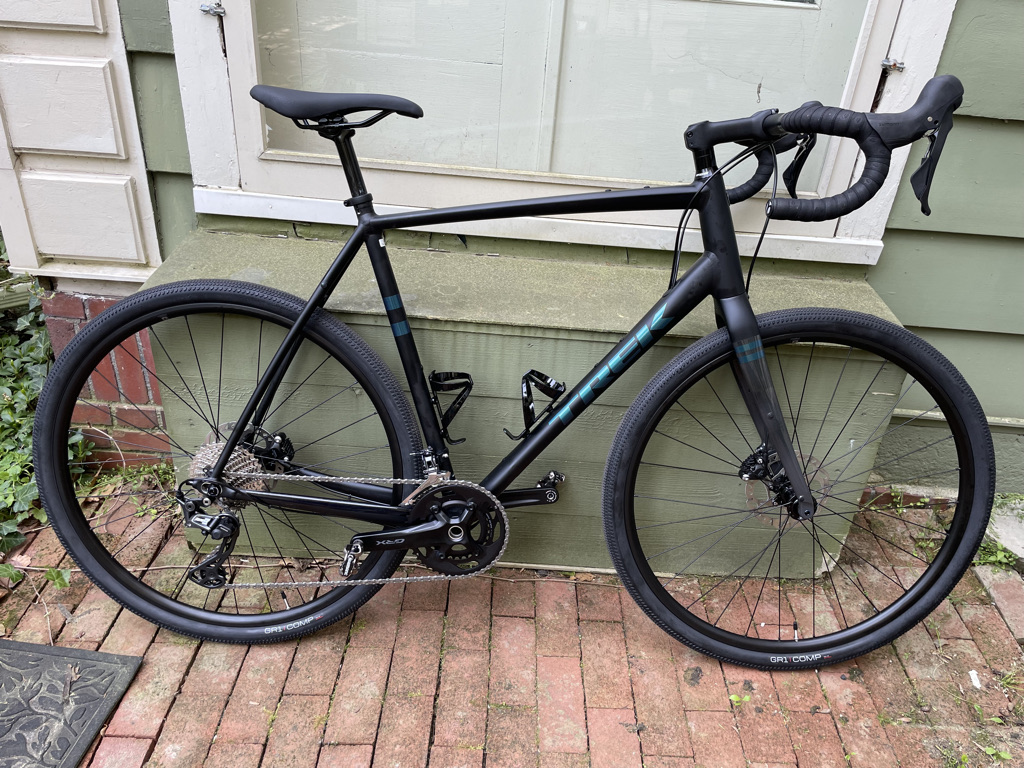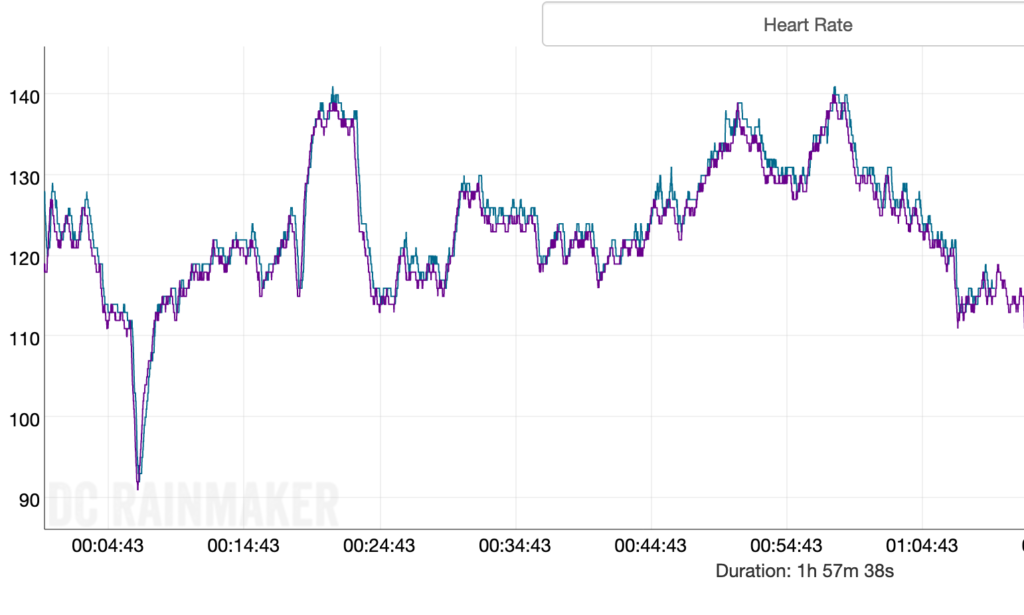Today was the annual Round The Mountain paddle race. I think in the past I’ve referred to it as a canoe/kayak race but that really does a disservice to the people who race in Adirondack guide boats and SUPs and probably other paddle and row craft that I didn’t notice. For me, it’s usually my first race of the year- I know people who start racing earlier but there is something I love about starting my season in Saranac Lake and finishing it in Long Lake in September. Well except last year when I only did one race, the Madrid COVID race. Being back on the semi-normal schedule is the first normal thing that’s happened since last March.
Being the first race of the year, weather is almost always a factor. We always joke that it’s flat calm when we arrive in Ampersand Bay to prepare our boats and then 10 minutes before race time it’s blowing a gale and there are two foot waves just outside the bay. That didn’t happen today. All the pre-race talk was about how cold it was – it was forecast to be 43F at start time and raining an hour later, which is a pretty miserable combination. I’d have to check, but I’m pretty sure that’s the coldest race I’ve ever done. I elected to wear my farmer john wetsuit and viakobi storm top. I was thinking of wearing a Mountain Hardware fleece vest as well, but once I got my pfd on it seemed too warm to I took it off. I had regular socks under plastic bags under neoprene socks. I also wore my favorite fiber pile toque. Warming up on the water I felt like my torso was too warm and my feet too cold. I was hoping the warmth would redistribute a bit after my blood got flowing.
The race is under new management this year, although Brian Mac is still helping them with the transition. Two of the changes they’ve implemented are that you had to pick up your race packet at the community center a few miles up the road, and when they called your wave you had to go through a chute carrying your boat to get to the water. I’m not a fan. The first one didn’t really change anything except the route you drive to the start. The second one was a huge bottleneck which slowed down the process of getting each wave ready and acted as a disincentive to warming up early because you’d have to get back out of your boat and carry it through the chute after you’d warmed up. A traditional paddle wave would probably have been faster.
In the past they’ve messed with the order of the start waves and who starts in what wave. I think Brian’s usual method was to try to start the slow people first to minimize the amount of time they’d have to staff the finish line. This time they announced that they’d start the fast boats first in order to reduce congestion at the portage. Except when we picked up our race packets, we noticed that while unlimited kayaks were second wave and touring kayaks were third wave, for some reason guide boats and SUPs were in the first wave. As a matter of fact, other than the touring kayaks starting behind us, it was looking a lot like a Brian Mac start order.
Before the race, I like to scope out “the quality”, IE the kayaks that are faster than me and the ones I’m competitive with. And really, I felt like I was going to be alone out there. Two really fast paddlers, Royal and Matt, were going to be in doubles (but not with each other, thank goodness), two really fast old guys in my age group were obviously going to be up with the doubles and then there was Eric, who I’ve occasionally been close enough to see him finish but I’ve never managed to be with him for more than a thousand meters or so. The people I felt I had a chance to paddle with like Dave W and Bob R were in touring class and starting several minutes behind me, so I was hoping not to see them.
So when we started, as expected the two old guys and the two doubles were off like a shot. Initially I was just going to find a c-2 wake to ride across the lake like I usually do, but it wasn’t as wavy as it usually was. I was amazed to find myself on Eric’s stern wake and ahead of Tim’s c-2 which I’d tucked in behind in 2019. I figured this might last all the way across the lake if I was lucky, but there’s no way I’d be able to hold it once we got into the sheltered water and down stream parts. Eric and this very fast c-2 were side by side, and I briefly thought about transferring to their stern since they put out a bigger wake than Eric’s V10, but I decided it was too risky. I still second guess that, because they eventually pulled away. But Eric didn’t. I was stuck on him like a limpet.
Up ahead it looked like the four leading boats had separated into two groups, but I couldn’t tell if it was the two doubles and the two singles or two groups with one of each. The pontoon boat that often sits in the lee of the first big island wasn’t making everybody pass on his left this time so one of the groups went close in to the shore of the island. I’ll have to check my videos later, because I can’t remember which way we went.
In the river, I stayed with Eric. Even though he was sticking to the buoyed channel in places where I normally take a short cut, I didn’t want to risk losing this wake so I stayed with him. And we were making really good time. And a couple of the short cuts I normally take were actually bad choices because we were catching the first wave people and there were crowds in some of them. Better to stick in the channel where there was room to pass. Royal’s double appeared to be in trouble because they went well off course. I couldn’t tell if they were thinking of heading to shore, or were lost.
A couple of times it seemed like Eric was putting in a big dig to try to lose me. We hit a couple of stretches of heavy headwind and I was really grateful for the windbreak so I worked extra hard not to lose him. I still didn’t think this was going to last because my heart rate was in the red zone and eventually I’d have to slow down.
Even in the stump Lake just before the portage, Eric took the very twisty main channel instead of going straight through the stumps like I normally go. And without the suck water, it was probably the better option in retrospect.
When we reached the portage, I was still on Eric’s stern, but he was slow getting out of the boat so I went ahead. I thought this was great, I could prevent him from getting too far ahead of me on the portage and I’d still have a shot at riding his wake afterwards. Royal and partner got there ahead of us, but they were intent on fixing something in their boat so I guessed that their earlier off course moment was a steering issue.
On the climb of the portage, I discovered a very interesting fact – if you put plastic bags between your sock layers for warmth, your shoes will slide around independent of the feet inside them which ruins whatever grip you might have. I’m sure Eric and the C-2 that arrived shortly after us were not appreciative of how slow I was, but it was marked as “no running, walk only” so I was just helping to enforce the rules. Descending the other side was even worse, because as usual there was a place where somebody had slid out on the mud and I didn’t want to slide and drop my boat.
At the dock on the other end, I took the less advantageous right side (which is partially blocked by a tree) expecting Eric to take the left side and get back into the lead with me not very far behind him. Instead, he seemed to be waiting for the right side. Before the race, we’d commiserated over our problems with numb butts and uncooperative joints, so maybe he was having those sorts of problems. The c-2 launched from the shore and was slightly ahead of me by the time I got paddling.
I initially tried to tuck in behind the c-2, but I soon realized I was faster than them so I struck out on my own. I was still expecting Eric to catch up at any moment, although I was vain enough to think maybe he’d ride my wake for a bit so I could say I’d returned the favor.
Being alone now meant I got to choose the route, which meant cutting every corner, going through the “sneaks” I’ve often taken, and generally congratulating myself on being a wiley old veteran of this race. Which of course meant struggling through some horrendous suck water because out of the channel means out of the deeper water. Also there was a lot more head wind around. I was struggling to maintain a bare 10 km/hr and in the really windy parts it was more like 8.5.
One lake was a raw quartering headwind that sent the occasional cold wave into my bucket, which didn’t increase my comfort level much. As well, without Eric to lead, I was letting my heart rate drop out of zone 5 (red) and into zone 4 (orange) which is more comfortable but slower. I was still expecting Eric to blast through at any moment, but when I snuck a glance back I didn’t see him, just that c-2.
Slowly the kilometers clicked up and the landmarks drifted by. No sign of Eric but I was convinced I’d just looked over the wrong shoulder and he’d be powered past on the other side. So even though I was theoretically alone, I put in a “finish sprint”, which is my laughing way of saying I briefly got my heart rate up into the red zone again without having an appreciable effect on my speed.
Because of social distancing there wasn’t an awards ceremony, but I did get a wood plaque for being third behind the two old guys. Other than Matt and Roger in the double, I don’t know if anybody was faster than us three. Maybe that c-2 that pulled ahead on the first lake, and probably Dave W in the touring class in third wave.
It was also a weird semi-post-covid mishmash of indecision about when to mask and when not to. In the pre and post race standing around and talking, mostly I didn’t mask because I’m vaccinated and so were the people I was talking to. But there were a few times I wasn’t sure if the people I was talking to were, but I figured since we were outside it was probably fine. It’s still feels odd and, to use an overused phrase, uncertain. I wonder how long it will take before we feel normal again?


